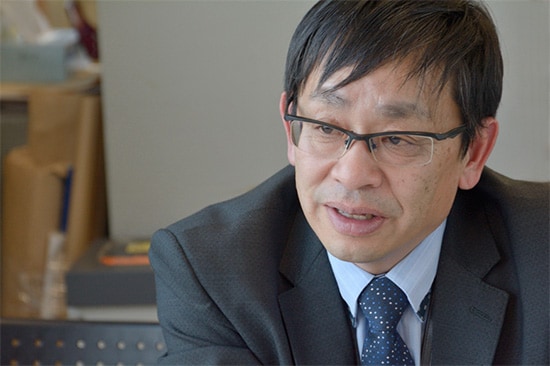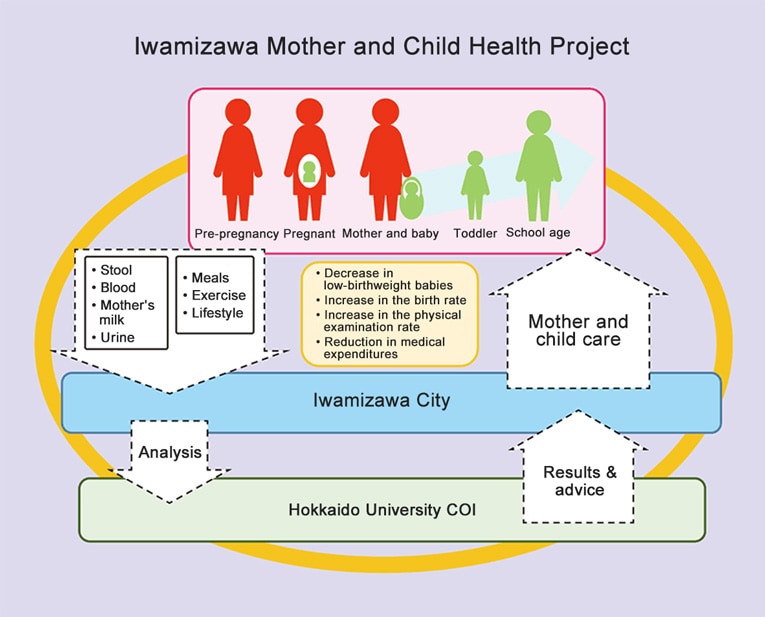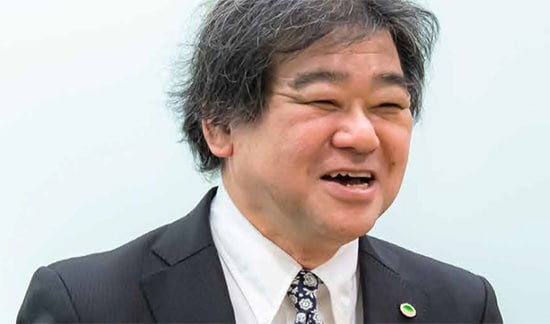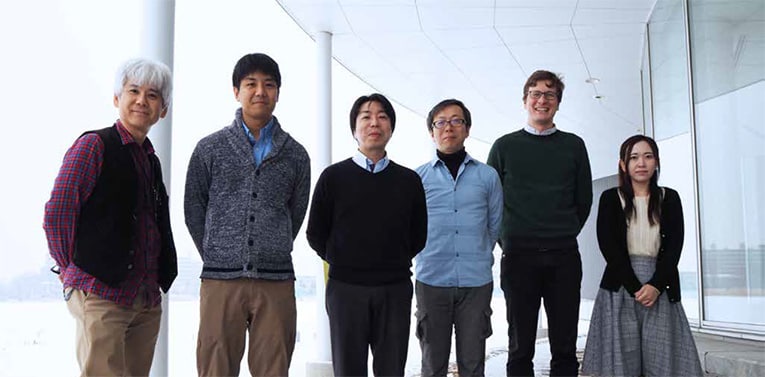Japan has long been up against a declining birthrate. In 2019, for the first time since the beginning of the collection of statistics in 1899, the number of births broke below the 900,000 mark, sinking to 860,000. During the second generation of baby boomers, born between 1971 and 1974, the annual number of births exceeded 2,000,000. Fifty years later, this has dropped to half, with no solution in sight.
Under these circumstances, one city is giving serious attention to the questions of how to raise the number of births and the birth rate in order to deal with a falling number of births. This is the city of Iwamizawa in Hokkaido, which has the second lowest number of births in Japan. As the first local municipal government in Japan to have its Health Management City Declaration certified, and taking "A better environment for the future of our children" as its slogan, Iwamizawa is working to create a secure environment for childbearing and childrearing and to develop conditions enabling children to live healthy lives into adulthood. As part of these efforts, the city started the “Mother & Child Health Survey” via an industry-government-academia-local community partnership as an initiative to support birth rate improvement and the healthy growth of mother and child after birth. This article discusses a future vision that has emerged owing to such cross-industrial collaboration.
Japan is facing the question of what is needed to halt its declining birthrate. According to Mr. Wataru Nagai, deputy chief in charge of promoting health and welfare at the Health and Welfare Department of Iwamizawa City, the answer lies in "creating a secure environment where healthy children can be born and raised." Iwamizawa City has always supported the development of a secure community environment for childrearing by holding prenatal classes, making health consultations available with public health nurses, and other such activities.
In recent years, surveys by UNICEF and other organizations have brought to light an issue considered to have significant impact on low birth rates and on the growth of children after birth. This issue is the high proportion of low-birthweight babies, defined as those weighing less than 2,500 grams at birth. Low-birthweight babies are more likely to need intensive medical care during the perinatal period. But it does not stop there. An epidemiological study has also reported that low-birthweight babies are more likely to develop metabolic syndrome as adults. According to an analysis of data on 281 million births in 148 countries conducted by experts from UNICEF and the World Health Organization (WHO), the birth rate of low-birthweight babies is increasing, and there is no progress in improvement. Data from 2015 shows Japan reaching 9.5%, making it one of the highest among developed countries.

Mr. Wataru Nagai, deputy chief in charge of health and welfare promotion,
Health and Welfare Department, Iwamizawa City
(Photograph: Shunichi Funato)
Iwamizawa is taking this low-birthweight issue seriously. Reducing the proportion of low-birthweight infants will not only lead to lower burdens on mother and child and to healthy futures, it will control social insurance expenditures needed for treatments and tests and lead to sustainable regional development. To achieve these, Deputy Chief Nagai says that Iwamizawa City "decided as a first step away from conventional environment creation for mothers and babies to conduct the Mother & Child Health Survey in order to identify the various factors that affect the growth and development of children, adopting as a means of doing this an industry-government-academia-local community partnership."
The Mother & Child Health Survey is conducted as a project of the Hokkaido University Innovative Food & Healthcare Master COI Site (hereafter referred to as "HU COI"), under the Center of Innovation Program (COI) by Japan Science and Technology Agency. About 40 organizations from industry, government, and academia, including Iwamizawa City and Hitachi, participate in HU COI, which is based out of Hokkaido University. Because of the perfect accord between HU COI's purpose—that of making "society friendlier to women, children, and the elderly through the provision of food and exercise that are best tailored to the state of individual health"*—and Iwamizawa's policy of creating a great city for mothers and their children, it was decided to tie these initiatives together and to proceed from there.
* Source: Innovative Food & Healthcare Master website

The “Mother and Child Health Survey” is a mother and child cohort research* project conducted as an industry-government-academia partnership. In addition to conducting a survey in the form of a questionnaire on the eating and lifestyle habits, living environment, and other factors related to pregnant women and their babies, the project analyzes samples of blood, urine, umbilical cord blood, mother's milk, stool, and other elements. While data analysis is aimed at investigating effects on childhood growth and development, another major purpose of the “Mother & Child Health Survey” is to use the survey as an opportunity to encourage changes in behavior during pregnancy, such as increasing the number of women who undergo physical examinations and improving their lifestyle habits. Evaluations of dietary habits and advice on points of improvement are presented to expectant mothers based on the results of a questionnaire focusing on dietary habits. This is done with the hope of raising awareness regarding dietary habits and changing behavior.
* Cohort research: A research method that gathers people who have currently (or at some point in the past) not contracted the target research disease and investigates whether the presence or absence of certain factors are related to the occurrence or prevention of the disease through continuous, long-term observation into the future

Professor Akiko Tamakoshi, Ph.D. (medical), Hokkaido University
(Photograph: Shunichi Funato)
There are various reasons for wanting to encourage changes in behavior during pregnancy. Professor Akiko Tamakoshi, from the Department of Public Health, Graduate School of Medicine, Hokkaido University, points out that one reason why Japan is seeing a high proportion of low-birthweight babies compared to other countries is that "Young women are oriented toward being thin. As women in Japan get slimmer by the year, many are experiencing corresponding nutritional deficiencies, and this is believed to be a major cause in low birthweights."
City residents have great hopes for the “Mother & Child Health Survey”. At present, the survey is being conducted at one of the two medical facilities that handles childbirths in Iwamizawa City. Despite only women whose agreement has been obtained are survey targets, over 150 have participated—a figure that reflects the high interest of the city residents.

Ms. Yukari Nakajima, head nurse, Nursing Section, Nursing Department, Iwamizawa Municipal General Hospital
(Photograph: Shunichi Funato)
From March 2020, the scale of the survey will be expanded via the adoption of the “Mother & Child Health Survey” by Iwamizawa Municipal General Hospital, an institution with childbirth services that had not previously participated. According to Ms. Yukari Nakajima, head nurse of the Obstetrics and Gynecology Department of Iwamizawa Municipal General Hospital, "I feel that being able to identify things that were previously uncertain through this new survey will lead to subsequent actions by those of us that support mothers and their babies. I expect that the survey so far has been instrumental in reducing the number of low-birthweight babies, and I'm looking forward to future results."
The “Mother & Child Health Survey” is unique throughout the world for such features as its focus on the intestinal environments of the mother and child. Although Iwamizawa City has a role to play as a field for demonstration of the survey, the municipal government is limited in what it can do on its own. According to Deputy Chief Nagai: "At HU COI, using the know-how and ideas of universities and industry and in skillfully combining their fields of expertise and resources, it is expected that we can instigate the development of projects and initiatives that previously did not exist. This is what led to the 'Mother & Child Health Survey.'"

Mr. Masanori Yoshino, senior project manager,
Center for Exploratory Research,
Research & Development Group, Hitachi, Ltd.
However, the partnership did not become forged overnight. According to Mr. Masanori Yoshino, senior project manager, Center for Exploratory Research, Research & Development Group, Hitachi, Ltd., and the HU CIO project leader: "There was a lot of necessity for deep discussions so as to get this partnership project up and running. It took three years to implement the 'Mother & Child Health Survey.'" He says that the reason why collaborative creation was possible in a situation full of challenges was that "all of the project members in the city and elsewhere shared a strong desire to reduce low-birthweight baby numbers by having all related people hold exhaustive discussions in order to ensure the future happiness of all mothers and their children." Speaking of the fervor in driving the project forward, he goes on to say: "The significance of this project lies in its working toward realizing a society that is focused on children, for it is they who will create the future. Regarding community issues as its own, Hitachi wants to promote healthy and vibrant lives for mothers and their children through initiatives carried out via an industry-government-academia-local community partnership."
With respect to what researchers and the industry want to do and what the local government can do as a city , their respective roles and areas of expertise have no overlap, even if they are on the same track. He says that to unify all of them into a single project requires extensive discussions. For example, in the case of items on the questionnaire form, researchers have certain ideas about what constitutes research, resulting in a tendency toward too many items. On the other hand, getting the cooperation of mothers must be given primary consideration. The public health nurses that provide the explanations to mothers must also be considered. Because of this, Professor Tamakoshi says: "We struggled to strike a balance between what we wanted to investigate and what was actually possible."
Considerations on actual operation were essential to getting the survey going. With the cooperation of Iwamizawa City, Hitachi Hokkaido University Lab members went to clinics over and over again, constantly trying out and revising operational aspects, including explanations to mothers, explanatory material creation, procedures, sample storage, transport methods, and acceptance by obstetrics clinics.
Participants in the project generally agreed that the trial-and-error success in carrying out the “Mother & Child Health Survey” with the purpose of societal implementation was due to the unexpectedly large role played by Hitachi with its operations expertise in municipal government and in the healthcare industry. Says Professor Tamakoshi: "A survey like this requires the municipal government to have the desire to continue it, and it also needs the cooperation of medical institutions, arrangements with various actors, and the help of companies that do data analysis and other necessary tasks. Because industry, government, and academia shared the same goals, and because Hitachi worked on and arranged for all requests, we were able to start the project right up." Deputy Chief Nagai's assessment was that, "What we expected of Hitachi was its IT-based data analysis and management capabilities. However, when we actually tried to collaborate, we discovered that a large number of problems would arise during actual operation. To solve these, the project management capabilities possessed by Hitachi, the expert and experienced people inside and outside of Hitachi, Hitachi's ability to find the partner companies needed for development and implementation, and the company's rapid responsiveness all had a big hand in the success of the project."
The percentage of low-birthweight babies in Iwamizawa City is now on a downward trend, dropping from 10.4% before survey start to 8.5% in 2018. Nevertheless, the analysis results of the “Mother & Child Health Survey” will not be known until later. More data is needed for this, and because some clinics and general hospitals have only just started the survey, any results indicating a decrease cannot yet be generally considered to be a result of the research. However, according to Deputy Chief Nagai, his analysis "suggests that it is possible that the changes to the behavior of the participating mothers rippled throughout the maternal community, leading to the reduction in low birthweights."
The HU COI project period is ongoing until 2021. Regardless, Iwamizawa City plans to continue the “Mother & Child Health Survey” even after project completion so as to collect data on growth, illnesses, and other factors in the lives of children for the next several decades. Collecting data will enable the city to acquire new knowledge about mother and child health that was previously unavailable. Using this knowledge to create a better future environment for children is expected to eventually lead to healthier adults and senior citizens, and consequently to the control of social insurance expenditures—a current societal issue—ultimately leading to city development that will enable everyone to live healthy and vibrant lives. In addition to this initiative, Deputy Chief Nagai says of the future vision that "by implementing in society the Data and Healthcare Platform currently under development through collaborative creation with Hitachi and an industry-government-academia-partnership, we would like to effect further changes on behavior as related to the health of city residents."
The declining birth rate and aging population is a significant challenge across all of Japan. Finding solutions requires various initiatives that address complex societal issues. It is generally understood that expansions of facilities and systems will not be enough. Iwamizawa City’s project discussed in this article succeeded in both creating an environment and raising the awareness of city residents, and it is likely to become a model initiative for other municipalities. As city governments cannot achieve the goals on their own, it is essential that all actors in industry, government, and academia meet face-to-face, unify their ideas, and then proceed with project execution.
Through collaborative creation with Hokkaido University and based on the theme of solutions for new challenges in developed communities in Hokkaido, Hitachi established in 2016 the Hitachi Hokkaido University Lab for carrying out, in partnership with municipalities, demonstration tests and exploratory activities with the aim of finding solutions to such societal challenges as low birth rates, regional revitalization, and the environment. Hitachi is also nationally expanding its initiatives for finding solutions to societal challenges by engaging in other industry-government-academia-local community partnerships throughout Japan.
By applying and deploying the expertise and results acquired through these partnerships to solutions for societal issues both in Japan and globally, Hitachi will continue to contribute to the realization of Society 5.0 as a super-smart society.

Hitachi Hokkaido University Lab members
Release Date: March 2020
Solutions By: Research & Development Group, Hitachi, Ltd.







